An artistic legacy and familial influence, Tejal Patni emerges as the poster-boy of the ad film era from the 90s. Having apprenticed under the supreme genius Prabhu Dasgupta and a product of the cult collective agency Trikaya Grey, Patni started as a photographer and ad filmmaker. However, the recent outburst of his first immersive art showcase — ‘Vichitra’—translating to ‘Bizarre’— last month has truly caught attention.
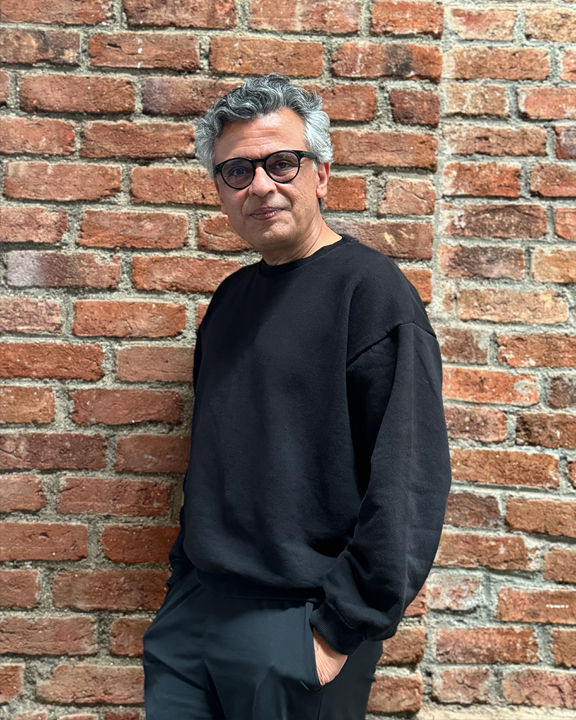
Patni’s work transcends traditional boundaries, embodying the ethos of the modern artist. His pieces evoke a sense of meta-irony, challenging conventional notions of meaning and reality. Through a seamless fusion of art, installation, and experience, he invites viewers into a realm where satire and dark humor intertwine, fostering connection and understanding in a fragmented world.
“So, when we finally said OK, let’s do this. Then, when toilet paper happened a few months ago, I told Raman, who is the gallery director and part of Snowball, I said it’s the right time. People are ready! India is ready,” exclaims 53-year-old Tejal Patni over our zoom call just a day after wrapping up his first solo immersive art show from the comfort of his home in Dubai after working on it for the last two long years!
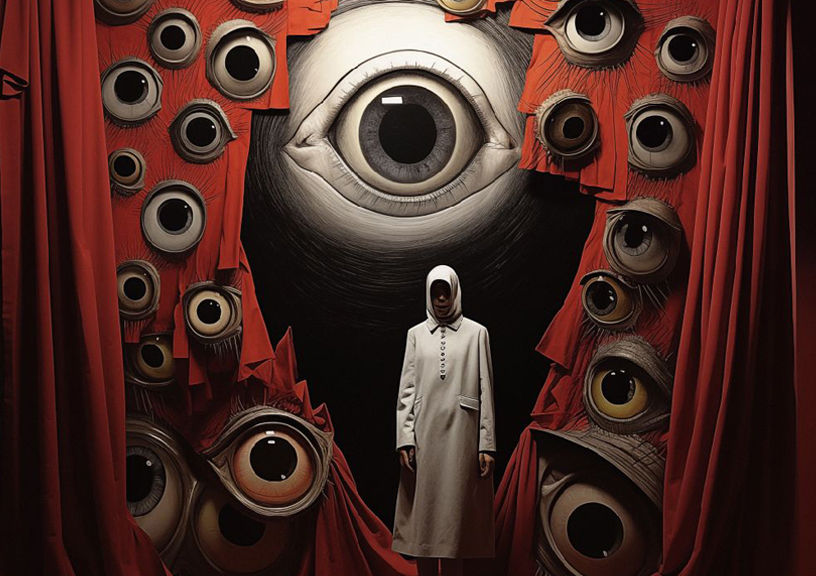
Cut to the vibrant streets of old Bombay, the echoes of Tejal Patni’s artistic journey reverberate through the charming bylanes of Fort. Here, amidst the hustle and bustle of everyday life, a young Patni diligently walks into a raddi shop, day after day, immersing himself in the works of iconic American typography artist Neville Brody.
“As a young artist, a Hitchcock film was a revelation,” Patni reminisces, his voice tinged with nostalgia, his eyes momentarily distant as he recalls the profound impact of cinema on his craft. “And delving into the darker realms of visual storytelling, Tim Burton emerged as a master of all. ‘Sleepy Hollow’ was a turning point for me, a fantastic body of work that reshaped my perspective and influenced my artistic trajectory in profound ways.”

Yet, it wasn’t just the silver screen that shaped Patni’s artistic vision. “Then there was Gregory Crewdson,” he continues, his voice brimming with admiration. “His approach to photography was nothing short of fine art. He was a maestro who meticulously crafted each image, hiring the top DOPs in Hollywood to build sets for single shots. The result? Pure magic. His work, reminiscent of a Hitchcock scene, yet uniquely his own, became an integral part of my artistic DNA. I absolutely love his work.”
In these words, we glimpse the essence of Patni’s creative journey—a tapestry woven from the threads of cinematic brilliance and photographic mastery, each influence leaving an indelible mark on his artistry. And as we stand on the cusp of his latest endeavor, ‘Vichitra,’ we can’t help but marvel at the depth and richness of his creative tapestry, a testament to the enduring power of inspiration.
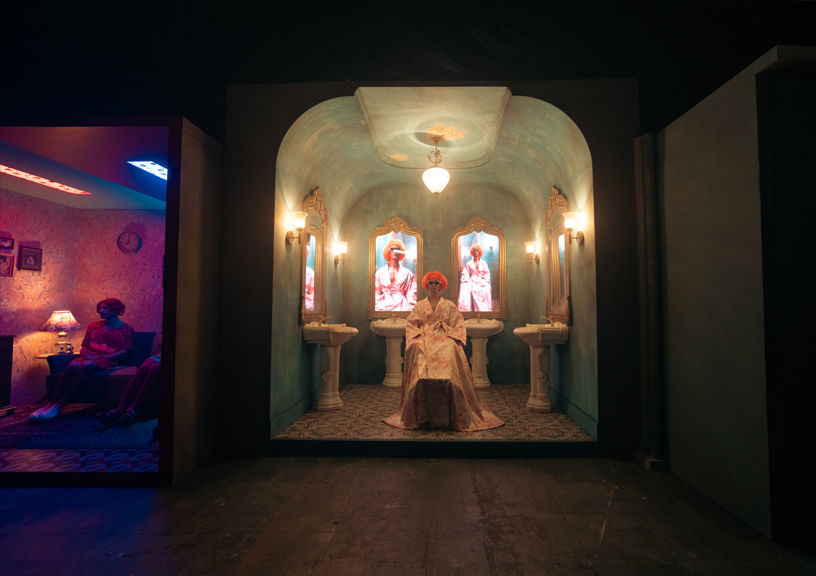
Excerpts from the interview:
Tell us about your background and what inspired you to pursue photography?
Well, I’m proud to call myself a little boy from Kutch, India, and my father was a legendary photographer in his time. His roots in the craft began at the esteemed JJ School of Arts in Bombay, which laid the foundation for my own aspirations. Moving with my family to Dubai in 1977, I found myself drawn to the arts from a young age. While I initially harboured dreams of becoming a director, the sight of my father labouring over his equipment during photoshoots left me hesitant about the taxing nature of
photography. However, the allure of the creative process beckoned me, especially as I watched my father effortlessly master various genres, from portraits with models like Mehr Jesia and Rachel Rubin to industrial and food photography. This exposure piqued my curiosity, leading me to enroll at the JJ School of Arts to pursue my passion.
How did your journey into photography progress from there?
It was quite an adventure. Firstly, I’m an extremely shy personality, but when it comes to reaching out regarding something that I wanna do, I am pretty. I’m not aggressive, but I am also very like a doctor, so I would definitely come to you and say, ‘listen, I think I’m good and maybe you should feature this. So, during my third year of college, I began capturing images under the streetlamp at night, finding the darkness fascinating. As a result, much of my work took on a dark tone, a term I feel has become recognized in artistic circles. This movie is dark. His photography is dark, but to me, there’s more to it—it’s cinematic, it’s moody.
I started shooting a lot under the streetlamp, and because I was active and experimental, Milind Soman and Arjun Rampal got wind of my work, especially since I spent time with the late and great Prabuddha Dasgupta whenever he was in Bombay. This made the industry more welcoming. We’d do shoots with Milind at 11:00 PM under Byculla bridge, creating timeless photos.
As my reputation grew, industry art directors began to take notice, enlisting my services for their pitches. Eventually within a 5-minute meeting via Preeti Vyas I was chosen to work on a campaign for Gujarat and Ambuja Cement for Trikaya Grey with Alok Nanda & Vikas Gaitonde, who instilled the ethos of ‘walk with the giants,’ in me.
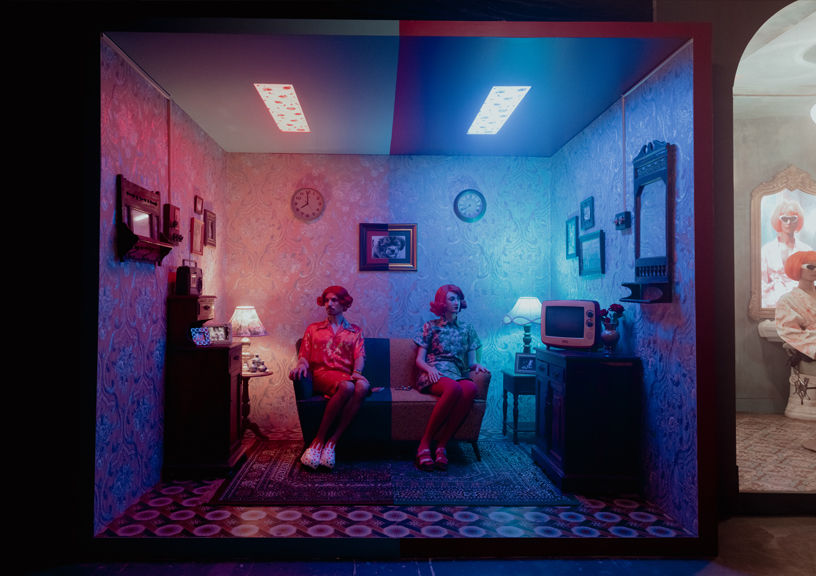
Could you share some of your early influences and inspirations in photography?
I used to frequent the raddi shop in Bombay, where they sold these incredible magazines like Phase and Arena. Neville Brody, with his stunning typography, was someone I admired and followed closely. I would immerse myself in those magazines, absorbing everything they had to offer. Even after moving back to Dubai following my time at JJ School of Arts, I maintained this routine diligently. It was a daily routine to the magazine shop, which was especially valuable without the internet.
Legendary/ iconic people whose work you really looked up to while growing up?
Sean Ellis and Nick Knight are like the pioneers of edgy, breakthrough work that deeply influenced my style. Then there’s Steven Meisel and Peter Lindbergh, whose versatility is unmatched; every photographer aspires to capture Lindbergh’s style, but nobody quite nails it like he does. Moving into filmmaking, the Coen brothers’ attention to visual storytelling through single frames inspired me deeply. Hitchcock and Tim Burton’s dark, cinematic worlds have always fascinated me, especially “Sleepy Hollow,” which left a lasting impression. And in color work, Gregory Crewdson’s approach to photography as fine art is truly mind-blowing. He creates these Hitchcockian scenes with his unique twist, and his work has become a part of my artistic DNA.
How has the transition been from photography to filmmaking and now presenting an art exhibition?
It’s been quite a journey. Back in 2003, I decided to take a break from my photography career to study film in the UK. And while I had the opportunity to assist directors, I deliberately chose to study film making among younger students in the UK. I was possibly the second oldest in my class and believe me it was a refreshing experience that allowed me to reinvent and recycle my skills. It was a transformative experience.
Similarly, the exhibition represents a new chapter for me. Initially inspired by a building in Delhi, I sought to convert it into a gallery space. However, practicality led to a more innovative approach, integrating the building into the gallery experience. This concept, akin to peering into spaces without walls, inspired the immersive ‘Vichitra’ exhibit. The journey from idea to realisation spanned two years, marked by excitement and creative exploration.
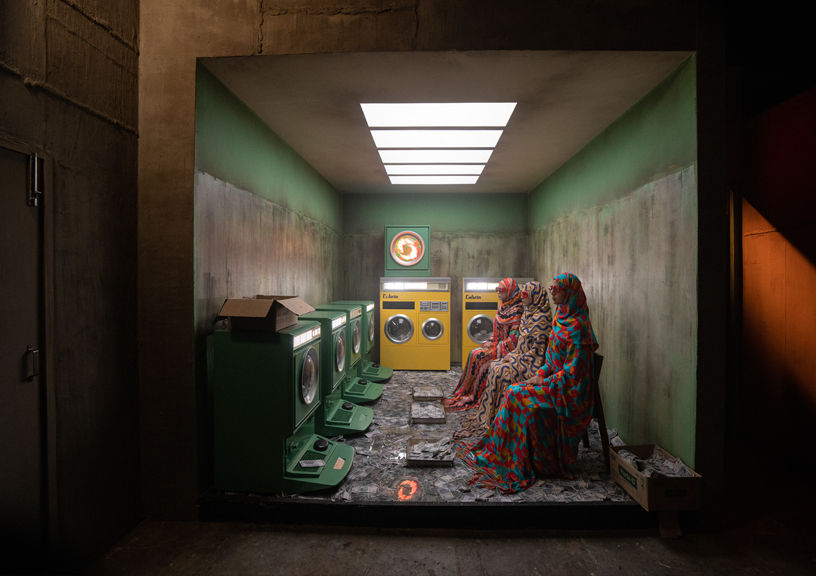
Was it a natural progression or was this always part of the plan?
It was a natural progression for me. I took the skills and knowledge I gained from photography and applied them to filmmaking. It was about telling visual stories in a different medium. For me, it felt like an evolution. It was about progressing and pushing boundaries. I was always conscious of evolving as an artist, rather than sticking to a specific style. Take, for instance, the super hard-directed images I created for the exhibition. People assumed they were digitally manipulated but were done purely through photography, years before AI became prevalent.
Tell us about the show Vichitra, walk us through the exhibit?
When you step into the exhibition space, you’re greeted by an usher, which serves as a subtle reminder that you’re about to delve into intimate aspects of people’s lives. This notion was inspired by the immersive experiences I’ve had watching Cirque du Soleil shows, particularly the ones directed by Dragon, whom I had the privilege to work with on a campaign. As you proceed into the exhibition, they encounter the first room, which I envisioned as a combination of a laundry room and a metaphorical representation of money laundering. This room also pays homage to my childhood fascination with the Doordarshan logo, a symbol I spent hours gazing at while waiting for my favorite shows to begin. The inspiration for this room also stemmed from observing clothes swirling in a tumble dryer, evoking the constant movement of cash.
The fashion in this room draws inspiration from Moroccan photographers and designers I admire. Moving towards the left, one would find the lift man, symbolising blind faith in the face of uncertainty. The elevator’s transformation into a local train serves as a callback to the promotional material featuring an astronaut wearing a helmet while traveling by train. So again, a little quirk of spaces. I just feel that life is a sliding door, if you miss the train or a bus, maybe there was a reason for you to miss it. But if you caught it, there was always a reason for you to catch it!
The ‘peeping room,’ which garnered significant attention, focused solely on animal reproduction—a topic of intrigue. Following that was the salon, where a subtle homage to Quentin Tarantino’s style was evident. I’ve always admired his work. The kimono, featuring blood stains, served as a nod to a character’s backstory—a Japanese gang lord operating in secrecy. The strategic placement of mirrors added depth, challenging conventional perceptions by selectively reflecting certain angles of the scene.
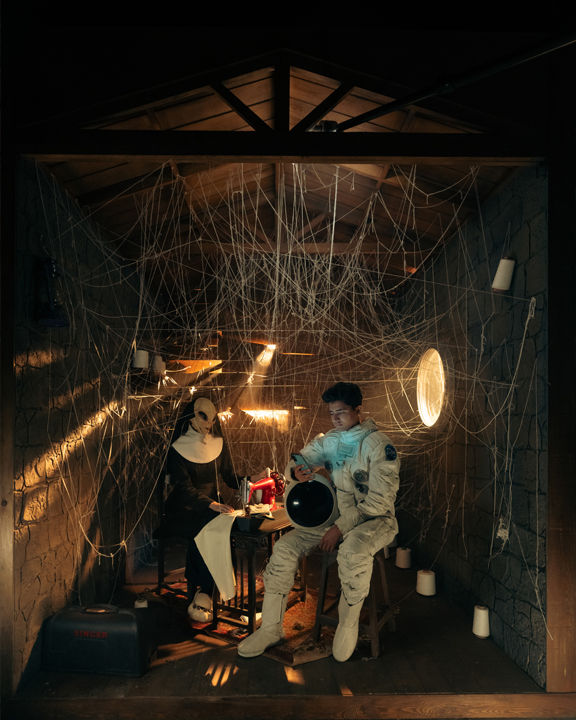
What did you hope the viewers take back from this?
My intention was for viewers to experience a range of emotions – from deep introspection to sheer delight. I wanted the images to linger in their minds long after they left the gallery. The essence lies in the purity of experiencing live images rather than through a phone screen.
And how do you see this interaction shaping the overall impact of Vichitra on the world?
I envisioned Vichitra to be fun, lighthearted, and celebratory. The overwhelming response from people of all ages and professions has been incredible. I aimed for it to be inclusive, inviting anyone who enjoys Shahrukh Khan and Salman Khan films. The secret recipe lies in its quirks and surprises, ensuring widespread appeal. I envision the show as a platform for fashion designers to showcase their work and for young musicians to explore their talent.
